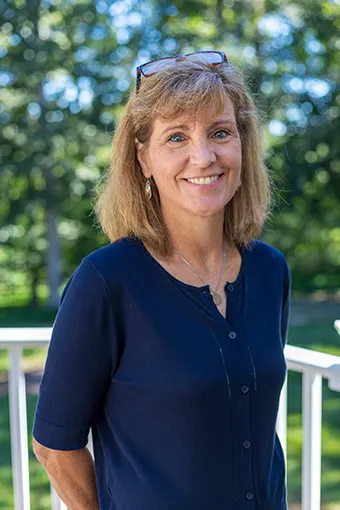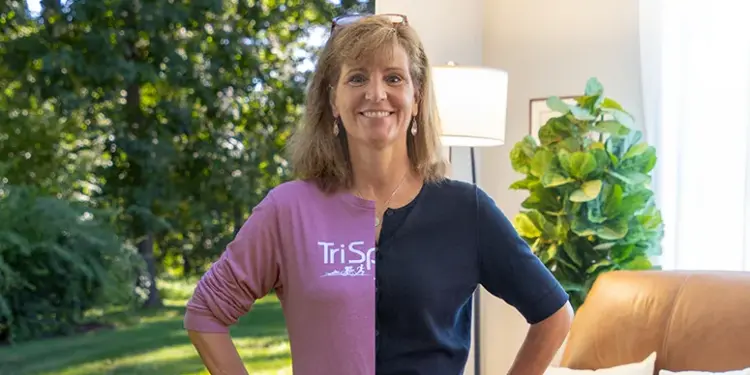by Amanda Milewski, Photography by Nikola Tzenov
Every minute, women are bombarded with messages from social media and other sources explaining how changing their clothes, hair, makeup and bodies can make their lives “better.”
But what about women who take on an entirely new career and embrace the unknown — the job market, financial security, or the impact on their marriage and family life?
According to the U.S. Department of Labor, approximately 75 million women ages 16 and older made up the workforce in 2023. Even before the COVID-19 pandemic, in 2019, a survey conducted by InHerSight found that seven in 10 women were looking to change careers.
Better pay was given as a primary reason for making a change. Others cited wanting a career that aligns better with their belief system, burnout, the lack of opportunities for advancement in their current job, and the need for a more flexible schedule.
Changing careers or industries is no easy task, even when the situation and conditions are right. In the InHerSight survey, women cited a lack of connections as the primary obstacle to changing careers, followed by a lack of education and the ability to accept a pay decrease. In Carroll County, women’s reasons for significant career changes track with the reasons noted by the InHerSight survey.
“Women often make a career shift for higher salaries or financial independence, seeking purpose-driven work, the need for more flexibility due to caregiving responsibilities or stagnation in their current role,” says Colleen Leary, student and career development specialist at Carroll Community College.
Despite the obstacles, a career change can be possible. In 2025, FlexJobs’ 2025 State of the Workplace Report found that 69% of 2,000 survey respondents — male and female — say that they have changed or considered changing career fields during the past year.
Work and Motherhood
Donna Barr Larkin, now a Main Street Sykesville business owner, began her professional journey as an accountant. After graduating with an accounting degree from the University of Richmond, she worked for four years as a cost accountant for a foam manufacturer and then in fixed assets and consolidations for James River Paper Company.
The motivation for her first career change came about after she and her husband moved to Maryland for his job (he’s also an accountant), and she had spent a few years as a stay-at-home mother.
She took on an assistant position at a Howard County preschool that her children attended. “I always felt comfortable with children, had two early education majors as college roommates, and worked at summer camps, so I decided it was a good fit,” Larkin says.

During her tenure as an assistant, one of the teachers retired, and Larkin decided to return to school for the certification needed to become a teacher, which she completed by the following school year.
“There were six classes I needed to take,” she explains, “and I remember coming home from the first one in tears, thinking I couldn’t do it and being overwhelmed by the idea of lesson plans and being creative.”
She conquered those feelings, completed the certification and taught preschool for the next decade, all while keeping her hand in accounting as the preschool’s treasurer for her last three years there.
For many women like Larkin, motherhood can prompt a career shift. Moms make career moves for many reasons, including to align their work to daily life with children, for a higher salary and better benefits, and for a workplace that offers a better work-life balance and more family-friendly policies.
Despite returning to an accounting role after the preschool closed, Larkin eventually followed a path that aligned more with her desire to build community and make a difference. After much discussion, in 2015, she and her friend, Jane Linde, opened Tri Sport Junction, a specialty running and triathlon gear store on Main Street in Sykesville.
Co-owning a retail store not only put her accounting background to good use but also required her to learn about retail sales systems, managing inventory, developing a store layout, communicating with sales reps and customers, engaging with other merchants on Main Street and programming events.
Professional Growth and Personal Mission
Leeanne Eckenrode of Marriottsville, who has a degree in cosmetology, worked in salons for several years full-time until she transitioned to part-time employment after having children. She eventually pivoted away from the salon industry due to the physical wear and tear of the job.
Following the salon, Eckenrode managed a small café. The job was closer to home and had a better work schedule for that time period in her life. Although it didn’t require any specific additional training, “There was a learning curve that came with managing all aspects of running a café, including interacting with the public and being very organized,” she explains. At the end of her five-year tenure there, she was handling all aspects of the business.
Despite being successful at managing a café, Eckenrode was ready for a challenge that would allow the possibility of professional advancement. She accepted a position with a large corporate bank in the mortgage department, “which offered both career and salary growth,” she says.
Eckenrode also had to undergo training to learn the mortgage systems she uses daily and was assigned a mentor to help her along the way. “Being as I had no mortgage experience, this was my biggest career change,” she says.
Taking Steps Toward Change
When asked for advice for women contemplating a career change, Eckenrode says, “Take the leap and take on the challenge. With every major career change, I learned something new about myself. There were definitely bumps with each change and some struggles, but when the dust settles, there is a beauty in looking back to see how far you have come. Never be afraid of reinventing who you think you are.”
For women considering a significant career change, Leary advises them to “identify what is most important to you in a career and research industries of interest. The workforce is rapidly changing, and labor market information should be an aspect of making an informed decision. A major career change is challenging no matter what,” she says.
Indeed, women may face systemic and personal barriers that can increase the challenge of a career change. “Women are more likely to interrupt their careers due to caregiving, which can cause resume gaps and delayed career momentum,” Leary says. “A lack of confidence is something we frequently see in female career transitions, especially in historically male-dominated fields such as STEM and the trades.”
Major career shifts not only take courage but also patience. Careers that require additional degrees may take two to four years to complete, but some that require certifications can take as little as two months, Leary explained. Despite the additional training and time required, both Larkin and Eckenrode have been happy with their career decisions.
“My professional career has not been typical, nor what a lot of people would call a career, my accounting jobs felt like jobs, but the preschool and Tri Sport were deeply life-changing. Neither was anything I would have thought I would ever do, but I’m so glad I went outside my comfort zone,” says Larkin.
Eckenrode echoes this sentiment. “Hairdressing allowed me to be more present for my family by being able to work part-time. The café taught me about running a business and put some amazing people in my life that I had the privilege to manage and interact with. Mortgage banking has shown me that a woman in her 50s can have a career that was, at the time, put on hold to raise a family. I feel that, from a career perspective, I have really had it all.”









